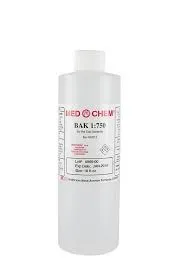Exploring the Applications and Benefits of Diethylenetriamine Pentaacetate in Various Industries
Understanding Diethylene Triamine Penta A Multifunctional Chemical Compound
Diethylene Triamine Penta, commonly referred to as DTPA, is a chemical compound that has garnered significant attention in various fields, including chemistry, environmental science, agriculture, and medicine. This article delves into the characteristics, applications, and importance of DTPA, shedding light on its multifaceted roles in both industrial and scientific contexts.
Chemical Structure and Properties
DTPA is a chelating agent that belongs to the class of polyamine compounds. Its molecular formula is C10H19N3O10, and it contains five functional amine groups that can bind to metal ions. The structure features two ethylene groups connected to a triamine backbone, which allows it to effectively form complexes with various metals such as calcium, magnesium, iron, and manganese. This chelation property is particularly important in controlling the availability of these metals in various environments, making DTPA a valuable tool in both agricultural and industrial applications.
Agricultural Applications
One of the primary uses of DTPA is in agriculture. It is employed as a micronutrient stabilizer and a foliar spray to enhance the availability of essential trace elements to plants. In soil that is deficient in vital nutrients, DTPA can chelate metals like iron and zinc, preventing them from becoming unavailable to plants due to soil conditions. This is especially crucial in soils that are calcareous or alkaline, where essential metallic micronutrients can precipitate and become inaccessible to plants. This application helps in improving crop yield and quality, ensuring that plants receive adequate nutrition for optimal growth.
DTPA is also used in fertilizers to enhance nutrient uptake. As a part of controlled-release fertilizers, DTPA ensures a consistent supply of essential nutrients, promoting healthy plant development while minimizing the risk of nutrient leaching into water systems.
Industrial Uses
Beyond agriculture, DTPA serves several industrial purposes. In the textile and dye industries, DTPA is utilized to stabilize dye formulations, enhancing color vibrancy and preventing the precipitation of metal ions that could interfere with dyeing processes. Similarly, in the paper industry, DTPA is used to eliminate unwanted metal ions to improve the quality of paper produced.
diethylene triamine penta

In the field of water treatment, DTPA plays a crucial role in chelating unwanted heavy metals from wastewater, thereby aiding in the purification process. It helps in the removal of toxic metal ions, making it easier and more effective to meet environmental regulations and standards.
Medical and Health Applications
DTPA has important implications in the medical field as well, particularly in diagnostic imaging. It is used as a contrast agent in magnetic resonance imaging (MRI) and other diagnostic procedures. In this context, DTPA is often complexed with gadolinium, enhancing the clarity of images and providing medical professionals with the detailed insights necessary for accurate diagnoses.
Moreover, DTPA is acknowledged for its chelating properties in treating heavy metal poisoning. Industrial exposure to heavy metals can lead to serious health issues, and DTPA can bind to these toxic metals, facilitating their excretion from the body. This chelation therapy is a pivotal treatment in cases of lead, mercury, and arsenic poisoning, showcasing DTPA’s life-saving potential.
Environmental Considerations
While DTPA has numerous beneficial applications, its environmental impact should also be considered. The use of synthetic chelating agents in agricultural and industrial contexts can lead to concerns about bioaccumulation and persistent effects in the ecosystem. Therefore, ongoing research is focused on understanding the long-term impacts of DTPA and similar compounds on soil health and aquatic environments.
Conclusion
In summary, Diethylene Triamine Penta is a versatile chelating agent with a wide range of applications across various sectors. From enhancing agricultural productivity to playing crucial roles in industrial manufacturing and medical diagnostics, DTPA exemplifies the utility of chemical compounds in solving real-world problems. As research continues and our understanding of its environmental impact grows, DTPA will likely remain a significant compound in both science and industry. Its multifunctional characteristics not only contribute to human health and agriculture but also offer innovative solutions to contemporary challenges faced in environmental management and sustainability.
-
Water Treatment with Flocculant Water TreatmentNewsJun.12,2025
-
Polymaleic AnhydrideNewsJun.12,2025
-
Polyaspartic AcidNewsJun.12,2025
-
Enhance Industrial Processes with IsothiazolinonesNewsJun.12,2025
-
Enhance Industrial Processes with PBTCA SolutionsNewsJun.12,2025
-
Dodecyldimethylbenzylammonium Chloride SolutionsNewsJun.12,2025





